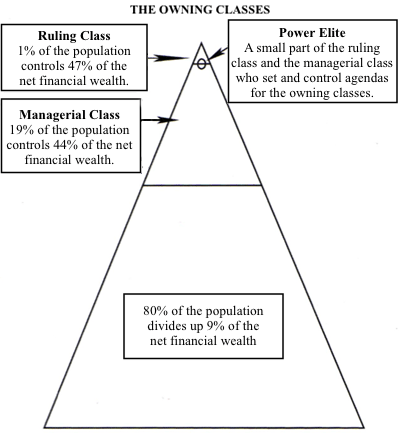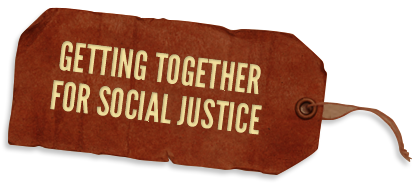THOSE OF US WHO ARE EDUCATORS on issues of diversity and multiculturalism and who are committed to the struggle for social justice in this country need to ask ourselves some hard questions. What is our role when affirmative action is being attacked by politicians and devastated by the courts, when violence against immigrants is increasing and rights are being taken away, when welfare mothers are being blamed for all social ills, and when black churches are being burned? At the same time, layoffs, corporate downsizing and mergers have disproportionately affected the jobs and working conditions of people of color.
As diversity professionals we are also facing tightening economic constraints within our field. Many consultants are having increasing difficulty finding work, reputable training centers have closed their doors for financial reasons, and more and more training is being conducted by in-house staff in corporations, governmental agencies, and non-profits and school systems. Although multicultural training has become a multi-million dollar profession, the context of that work is still largely marginal, maintained by networks of consultants, increasingly besieged professional staff within large organizations, and overworked, isolated teachers without adequate support or resources.
How do we maintain the political integrity of our work while maintaining a livelihood and the ability to function within increasingly conservative and embattled organizational environments? What is the relationship of our work to these issues? How are the participants in our trainings connected to social justice activism? What part do anti-racist consciousness and action play in our work and in our lives?
Since our work occurs in an extremely polarized and unequal economic hierarchy, and in an increasingly segregated and racially polarized society, we can begin to answer these questions by analyzing the effects of our work on the community to see if it contributes to perpetuating inequality or to promoting social justice.

The Class Pyramid
This is a brief version of what the economic pyramid looks like. There are some questions we can ask ourselves about our place on it.
1. What is my class of origin?
2. What is my present class position?
3. What class to I stand in solidarity with, whose interests I want to promote?
The fourth and hardest question is the following,
4. Which class benefits from my work?
To answer this question honestly, many of us would have to admit that although our work may benefit many individual people, including many people of color in the bottom 80% of the pyramid, in the larger scheme of things our work and the organizations we work for maintain the status quo, perpetuating the inequalities of the pyramid, and primarily benefiting the top rungs, the wealthy, the ruling class. Our jobs may help many people have greater access to job and educational opportunities, promotions and training, and greater access to social services, but often they do not challenge the distribution of power, wealth and resources which maintain the basic inequality of opportunity in this country. Many of us work in the middle area of the pyramid, providing a buffer zone between the frustration, pain and anger of the people at the bottom and the concentration of wealth and power at the top. We may keep people and their hopes alive, but without giving them enough information, material resources and skills to seriously challenge the ruling class.
We should not be surprised by this situation. Multicultural educational work developed partly as a response to the Civil Rights movement and the anti-racist activists who, through grassroots organizing, put racism on the agenda of corporations, schools, and community institutions. The growth of a group of professionals who do multicultural, diversity, unlearning or other trainings, as opposed to anti-racist organizing, was partly a progressive response to incorporating grassroots demands for inclusion and diversity, and partly a reactionary response to deflect further such demands. During this period of the 1960s and 1970s, there was a more liberal social climate and more immediate grassroots pressure on institutions. Multiculturalists had more leverage to fight for changes within organizations.
More recently, the question of how we can all get along, work together, succeed as a team, and hear everyone’s voice superseded the questions of who has power and how can it be shared more equitably. With less external social pressure, organizations were quick to take racism off the agenda and to put team building and celebrating diversity in its place. Today, in the late 1990s, teachers and trainers currently have less leverage to challenge this backlash, although that does not mean we have no leverage.
It is easy for us to forget that we are only able to work “inside” organizations because so many people organized from the outside as part of the Civil Rights Movement, the women’s movement, the lesbian, gay, bisexual and trans liberation movement, and disability rights movement. As we became professionalized, dependent on this work for our livelihood, and caught up in the exigencies of doing the work, some of us have become more and more disconnected from the everyday political struggles in our community for equal opportunity, access to training and jobs, comparable pay and an end to sexual and racial harassment which the work originally grew out of.
Did you find a disjunction between your answers to questions three and four, above? Is there a gap between your solidarity with the bottom 80% and the function of your work which buttresses a system of vast inequality and injustice? It is possible to close that gap. Even from within large organizations and institutional structures it is possible to work for social justice. It is possible to serve the interests of the poor and working class, people of color and women, lesbians, gays, bisexuals, and trans people, and people with disabilities more effectively. Doing so is not without risk.
We each need to determine the amount we can risk financially against the spiritual and emotional risks we bear by not standing by our commitment to social justice. These are strategic decisions that we cannot make in isolation from the inside of the organization(s) we work for. Our work is part of a much wider network of individuals and organizations working for justice on the outside. To make effective decisions about our own work we need to be accountable to those groups and their actions and issues. This accountability then becomes a source of connection which breaks down our isolation and increases our effectiveness as social justice activists.
I’d like to end this article with some suggestions for how to think about accountability in this context. I want to focus on racism as an example as I look at three questions I think we need to ask ourselves in the current political context.
Who supervises my work? I don’t mean who employs us or funds us, although that is an important consideration in a conservative political climate when jobs are scarce. Who are the grassroots activists who advise us, review our work, and with whom we consult? I think it is particularly critical for those of us who are white to be accountable to people of color so that our work doesn’t inadvertently fuel the backlash or otherwise make it more dangerous for people of color. But regardless of our ethnicity or race, we need to be accountable to people who are on the front lines of doing anti-racist work. Even people of color can be coopted into representing the interests of the wealthy.
Am I involved in community-based anti-racist struggle? If we are not fighting for affirmative action, for immigrant rights, against environmental dumping in communities of color, against police brutality, or for access to health care, or for anti-racist policies and practices within our own institutions, what are we modeling? How are we learning? What informs our work? Can we be accountable to anti-racist work if we are not politically involved ourselves in some aspect of it?
Are current political struggles part of the content of what I teach? Do we connect the participants in our trainings to opportunities for on-going political work? Do we bring current political struggles into our trainings or do we teach about diversity and multiculturalism without dealing with the issues that most directly affect the lives of white people and people of color? Do we give participants tools and resources for getting involved in the issues they identify as most immediate for them, whether those be public policy issues such as immigration, affirmative action, welfare or health care, or workplace, neighborhood, and community issues such as jobs, education, violence and toxic waste? When they leave the (class)room after our training or workshop can they connect what they just learned to the racism they experience in their lives? Are we responsive to their needs for survival, safety, economic well-being, and political action?
Who we are accountable to is a crucial concern in a contracting economy during conservative political times in which racial, sexual, and homophobic backlash is widespread. We may be discouraged about the possibility of doing effective political work in this context. We may be fearful of losing our jobs and livelihoods or lowering our standard of living. These are real concerns. But this is also a time of widespread organizing and resistance to racial backlash. It can be a time for us to realign clearly with those organizing efforts and reclaim the original vision of racial justice and equality which brought our work into being.
Please send comments, feedback, resources, and suggestions for distribution to paul@paulkivel.com. Further resources are available at www.paulkivel.com.
All articles may be quoted, adapted, or reprinted only for noncommercial purposes and with an attribution to Paul Kivel, www.paulkivel.com. Creative Commons Attribution – Noncommercial 3.0 United States License. To view a copy of this license, visit here.
